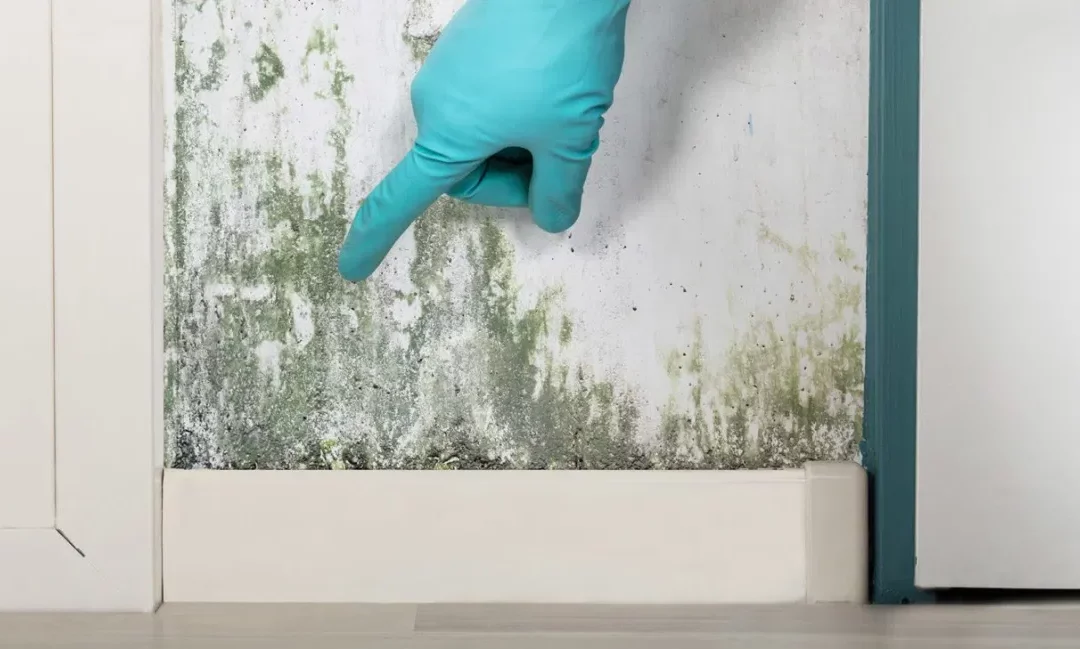Did you know mold spores are actually found in most homes? The good news is, not all mold is dangerous. Whew! Even so, some kinds of mold can actually make you sick. For instance, a high volume of non-toxic airborne spores can cause allergies. But if toxic mold is present, it could lead to serious health issues like skin rashes and even neurological problems.
In addition to potential health hazards, mold can also cause structural damage to the walls, floors, and ceilings in your home.
You can prevent mold from developing in your home as long as you know what to look out for!
Where Are The Places Mold Commonly Forms?
> Kitchen and Bathrooms — These rooms share a few commonalities. Besides receiving the most use, the surfaces in the kitchen and bathroom get wet and water condenses on the surfaces. Mold grows on the walls, behind tiles, and underneath the sinks.
Pro-tip: A couple times a year, remove everything from the cabinets to check for the presence of leaks, moisture, and mold.
> HVAC Ductwork —The heating and air conditioning system in your home has multiple components that are conducive to mold growth. Especially in the summer, the air coming into your home has a high moisture level, which can condense and accumulate in the duct lining material. Any leak in the ductwork allows moist air to escape into the unconditioned spaces. The inside of the ductwork can also grow mold!
> Floors — Carpet provides a perfect environment for molds because it captures dirt. Floods, leaks, and spills can soak carpet through to the underlayment. Carpet also absorbs the moisture in the air. Make sure that you check under carpet pads, too. If you suspect mold under your floorboards, you’ll need to cut a hole about every 24 inches then use a flashlight and mirror to look for mold underneath the floor.
> Appliances — Machines that use water or create moisture in some form can facilitate mold growth and mildew. On a washer, the rubber piece that goes around the door, called the washer boot, may have mold behind the flap. Most refrigerators have a drain pan underneath the appliance that catches the condensation from the freezer defrost drain. You may have to remove the kick plate to access the pan, which may contain water and mold.
Pro-tip: Other places to look under or behind for mold includes paneling, wallpaper, drywall, baseboards, and ceiling tiles.
How Can You Identify Mold?
Mold has typically has a “musty” or “earthy” odor. It can even look slimy or similar in appearance to the “green fuzzy” mold that appears on old food gone bad. When checking your home for hidden mold, keep in mind that the appearance of a mold problem has a direct link to one or more of the following sources of indoor moisture:
- Leaky roof
- Flooding
- Constant plumbing leaks
- Backed-up sewers
- Humidifiers
- Damp basement or crawl spaces
- Shower/bath steam and leaks
- Clothes dryers vented indoors
As you look into these problem spots, it’s important to know that mold generates spores to reproduce, and the spores can remain dormant for 50 or more years. Be careful not to disturb spaces that may harbor dormant mold! Your best bet is to call in a mold remediation expert, like the pros at C&C Unlimited.
Remediating Mold
Hidden mold can present a challenge for most homeowners to remove alone. Locating the mold may involve disassembling parts of your home, such as removing paneling, cutting away wall sections, lifting away baseboards, tearing up carpeting, to identify the affected area.
The mold remediation process requires experienced and skilled workers to remove and dispose of moldy contaminated materials properly. The EPA recommends that you call a professional mold remediation company for mold problem that covers more than 10 square feet. Mold remediation isn’t a DIY job!
If mold has been discovered in your residential or commercial property, reach out to us for a complimentary quote – you need a specialized contractor who has the experience and workforce to handle the job!
At C&C Unlimited, we pride ourselves on completing projects safely, on time, on budget and within scope.

